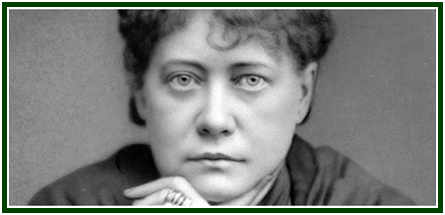A Very Practical
Question in the 21st Century
Carlos Cardoso Aveline

According to the New Testament, Jesus withdrew into the desert, and there he faced his own demon.
During the first centuries of Christianity, the Desert Fathers tried to follow the example of the great sage. They used to retreat to the most arid regions of the Middle East, and there they confronted and fought their own demons.
When we see in the texts published by the Independent Lodge of Theosophists that the Desert Fathers had much in common with the Essenes, and that the study of the Sentences and Sayings of the Desert Fathers is valuable today for the students of esoteric philosophy, it is natural for us to ask:
“Does the modern theosophist need to face demons?”
The answer depends on the meaning we attribute to the word. The term “demon” may make the naive young girls and superstitious ladies shudder, but the real meaning of the word is simple. It means “spirit”. Thus, the demon of gluttony is the spirit of gluttony. The demon of lust is the spirit of lust. The demon of envy is the spirit of envy. And we also have the spirit of anger, the demon of fear, the demon of laziness, the spirit of pessimism and so on.
This kind of spirit corresponds to the theosophical concept of “elemental”. Each of them is the force of an instinct, added to the force of habit. They possess a certain astuteness, by which they often deceive the voluntary consciousness of well-intentioned persons. In fact, the life and substance of such “instinctive spirits” belong to the unenlightened sectors of the soul in which they live, or the soul they seek to attack, and in which they want to have a place to live.
Such a view of the facts changes the meaning of the question. The superstitious approach adhered to by fearful ladies is overcome and left aside. The next step is to examine a widely circulating illusion, adopted by many in religious and “esoteric” circles, including the theosophical movement: the fanciful idea according to which we do not need to fight anything; that everything is harmony in the universe, and that the intention of “fighting something” is only a “lower kind of vibration typical of selfish and unenlightened beings”.
In reality, life means a constant battle.
In our physical body, leukocytes, or white blood cells, are warriors who fight opponents of human well-being, thus protecting our health around the clock. It is normal for a person to produce many billions of such warriors each day.
On a psychological level, we fight our own mistakes all the time, and sometimes we are forced to fight the mistakes of others. In the Letters of the Mahatmas, the Masters of Wisdom define the theosophist as a warrior of truth. Teaching the same basic principle by his example, the New Testament Jesus expelled the merchants from the temple, and said elsewhere that that he did not come to bring peace, but the sword.
Yes, every theosophist must fight his own demons, the spirit of error, the spirit of fear, the spirit of laziness and a few more. He himself needs to identify them, observe them, understand them, combat them preliminarily, before finding the most effective way to defeat them, and then actually start eliminating them.
But why would it be necessary to fight such demons in the desert?
Every soul is a vast territory which includes deserted and secluded regions. The good wishes and sacred decisions of the theosophical pilgrim are like warriors who fight and defeat demons in the desert of his own soul.
000
The above article is available on the websites of the Independent Lodge of Theosophists since 11 May 2025. It was first published at the June 2024 edition of “The Aquarian Theosophist”, pp. 3-4.
000
Read more:

Helena Blavatsky (photo) wrote these words: “Deserve, then desire”.
000
